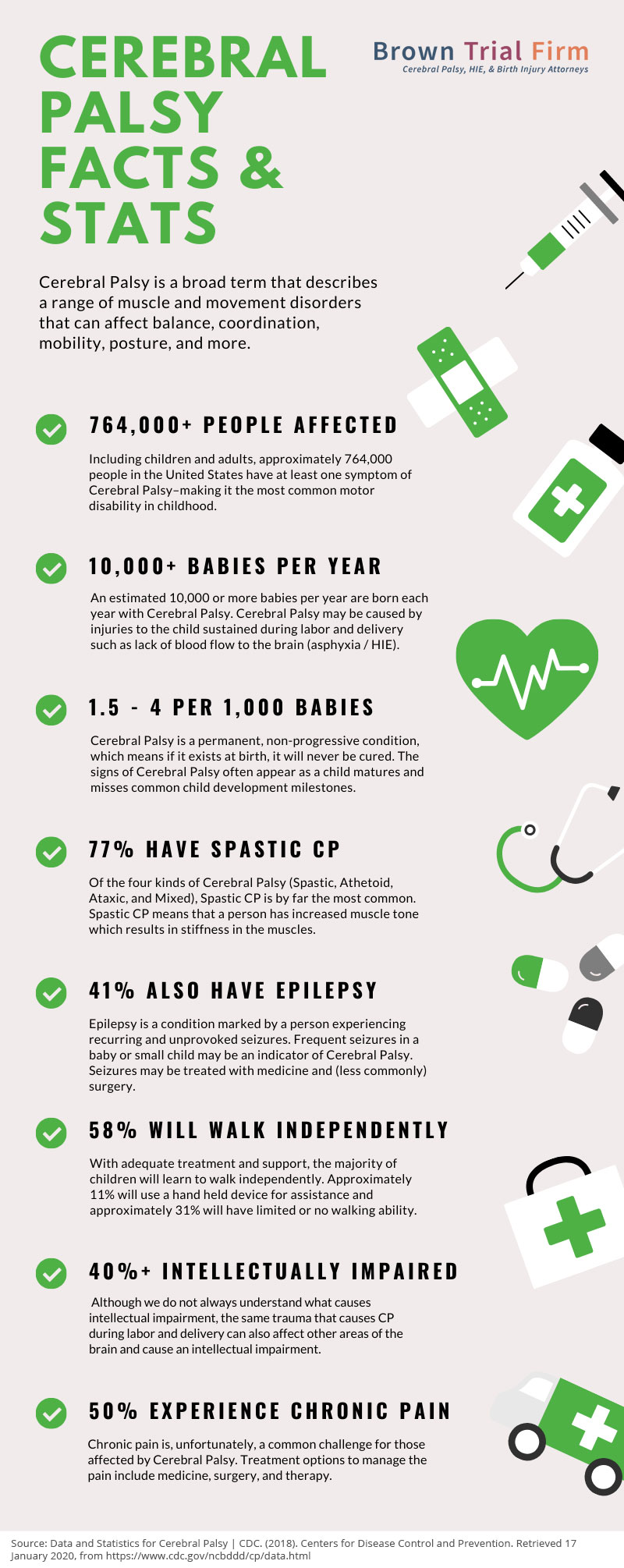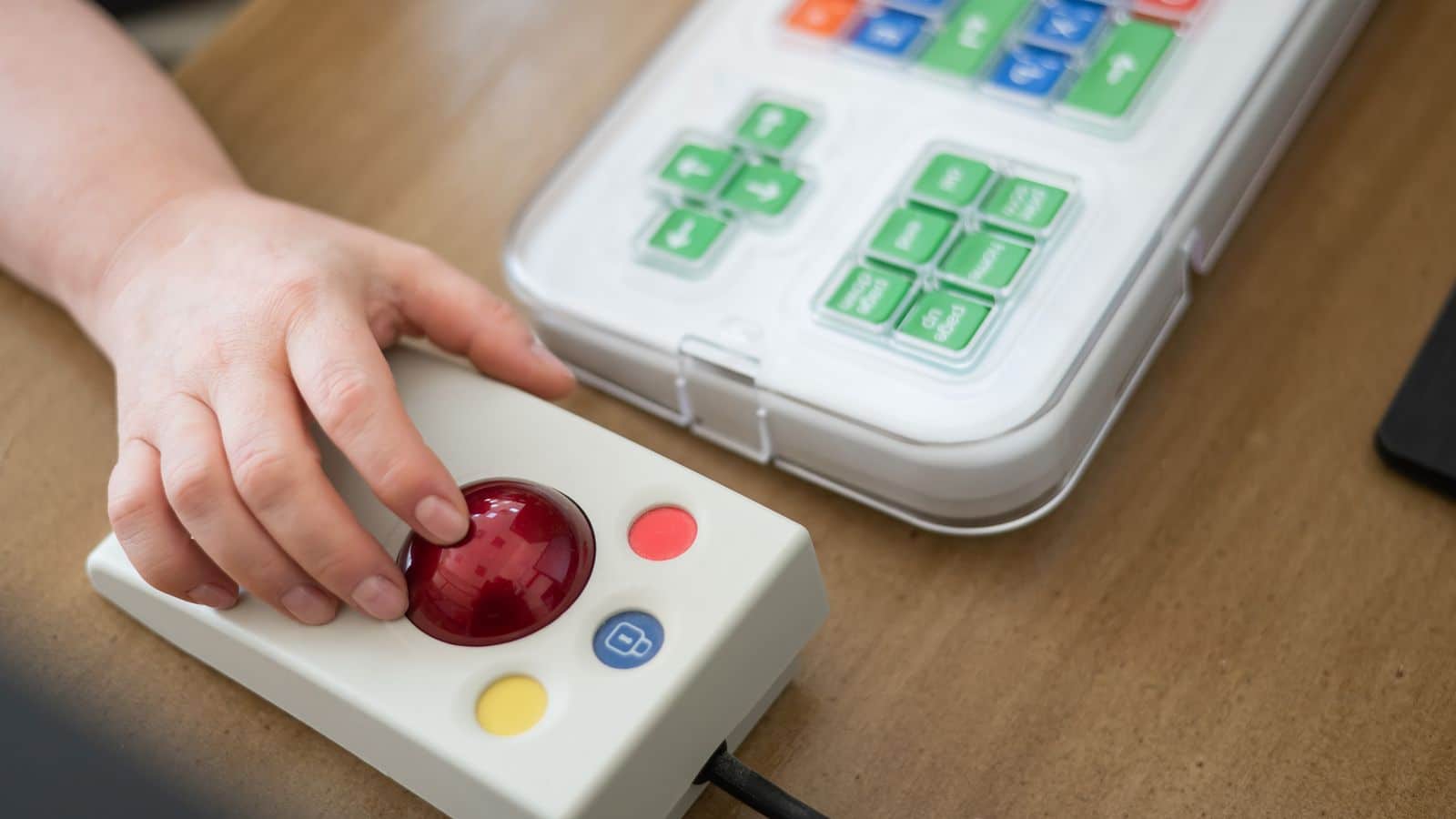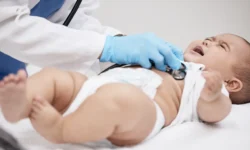Cerebral Palsy Facts & Stats
Cerebral Palsy is a broad term that describes a range of muscle and movement disorders that can affect balance, coordination, mobility, posture, and more.
764,000+ People Affected
Including children and adults, approximately 764,000 people in the United States have at least one symptom of Cerebral Palsy-making it the most common motor disability in childhood.
10,000+ Babies Per Year
An estimated 10,000 or more babies per year are born each year with Cerebral Palsy. Cerebral Palsy may be caused by injuries to the child sustained during labor and delivery such as lack of blood flow to the brain (asphyxia / HIE).
1.5 – 4 Per 1,000 Babies
Cerebral Palsy is a permanent, non-progressive condition, which means if it exists at birth, it will never be cured. The signs of Cerebral Palsy often appear as a child matures and misses common child development milestones.
77% Have Spastic CP
Of the four kinds of Cerebral Palsy (spastic, athetoid, ataxic, and mixed), spastic CP is by far the most common. Spastic CP means that a person has increased muscle tone which results in stiffness in the muscles.
41% Also Have Epilepsy
Epilepsy is a condition marked by a person experiencing recurring and unprovoked seizures. Frequent seizures in a baby or small child may be an indicator of Cerebral Palsy. Seizures may be treated with medicine and (less commonly) surgery.
58% Will Walk Independently
With adequate treatment and support, the majority of children will learn to walk independently. Approximately 11% will use a hand held device for assistance and approximately 31% will have limited or no walking ability.
40% + Intellectually Impaired
Although we do not always understand what causes intellectual impairment, the same trauma that causes CP during labor and delivery can also affect other areas of the brain and cause an intellectual impairment.
50% Experience Chronic Pain
Chronic pain is, unfortunately, a common challenge for those affected by Cerebral Palsy. Treatment options to manage the pain include medicine, surgery, and therapy.
Source:
Data and Statistics for Cerebral Palsy CDC. (2018). Centers for Disease Control and Prevention. Retrieved 17 January 2020, from https://www.cdc.gov/ncbddd/cp/data.html
Learn how adaptive equipment and assistive technology can improve the lives of kids with cerebral palsy and other birth injuries.
Getting help for a child with HIE or Cerebral Palsy
can make a big difference
Because early intervention is often key to helping improve a child’s wellbeing, it’s important to act swiftly. At the Brown Trial Firm, our Houston birth injury attorneys can help you investigate your case, find answers to your questions, and determine whether you are entitled to compensation. We offer case reviews at no cost or obligation. Many birth injuries that cause cerebral palsy could have been prevented.




